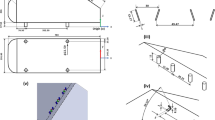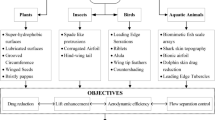Abstract
TheJOHN A. RYDER, clam dredging research vessel of the Maryland Department of Research and Education, was converted from dual-engine to single-engine powering of the pumping and propulsion systems through use of a controllable-pitch propeller designed for the specific application by Electric Boat Division of General Dynamics Corporation. The dredge pump is driven by mechanical power take-off from the propulsion engine at any desired speed, and optimal thrust is obtained by adjustment of the controllable-pitch propeller.
Tests conducted by the Department of Research and Education before and after conversion included (1) cruising speed and fuel consumption at cruising speed, (2) dredging rates, and (3) fuel requirements of dredging. Performance of the controllable-pitch propeller at cruising speed compares favorably with that of the fixed-pitch propeller formerly used. Fuel savings of about one-third are realizable with the single-engine powering system, with no sacrifice of necessary flexibility of operation.
Similar content being viewed by others
Literature Cited
Dickie, L. M. andJ. S. MacPhail. 1957. An experimental mechanical shellfish-digger.Fish. Research Bd. Canada, Prog. Rept. Atlantic Coast Stat. 66:3–9.
Electric Boat Division, General Dynamics Corporation. 1959. The controllable-pitch propeller.
Fish Boat, The. 1958. The variable pitch propeller.The Fish Boat 3,10:24,25.
—. 1958. The facts you should know about nylon propellers.The Fish Boat 3,12:28.
—. 1959. A controllable pitch propeller gets first tests on U. S. trawler in shrimp industry.The Fish Boat 4,10:26,27.
Manning, J. H. 1957. The Maryland soft shell clam industry and its effects on tidewater resources.Md. Dept. Research and Educ., Resource Study Rept., No. 11, pp. 1–25.
Manning, J. H. 1959. Commercial and biological uses of the Maryland soft clam dredge.Proc. Gulf and Caribbean Fish. Inst. 1959. (In Press).
— andE. A. Dunnington. 1955. The Maryland soft shell clam fishery: a preliminary investigational report.Proc. Nat. Shellfish. Assoc. 46:100–110.
Medcof, J. C. 1958. Mechanized gear for shellfish harvesting and shellfish culture.Fish. Research Bd. Canada, Manuscript Rept. Ser. (Biol.) 644, 1958, pp. 1–12.
Medcof, J. C., 1960. Effect of hydraulic escalator harvester on under-size soft-shell clams.Proc. Nat. Shellfish. Assoc. 50 (In Press).
Skene, N. L. 1925. Elements of yeacht design.Yachting, Inc., New York.227 pp.
Author information
Authors and Affiliations
Additional information
Contribution No. 133, Maryland Department of Research and Education, Solomons, Maryland.
Rights and permissions
About this article
Cite this article
Manning, J.H., McIntosh, K.A. Evaluation of a method of reducing the powering requirements of soft-shelled clam dredging. Chesapeake Science 1, 12–20 (1960). https://doi.org/10.2307/1350532
Issue Date:
DOI: https://doi.org/10.2307/1350532




